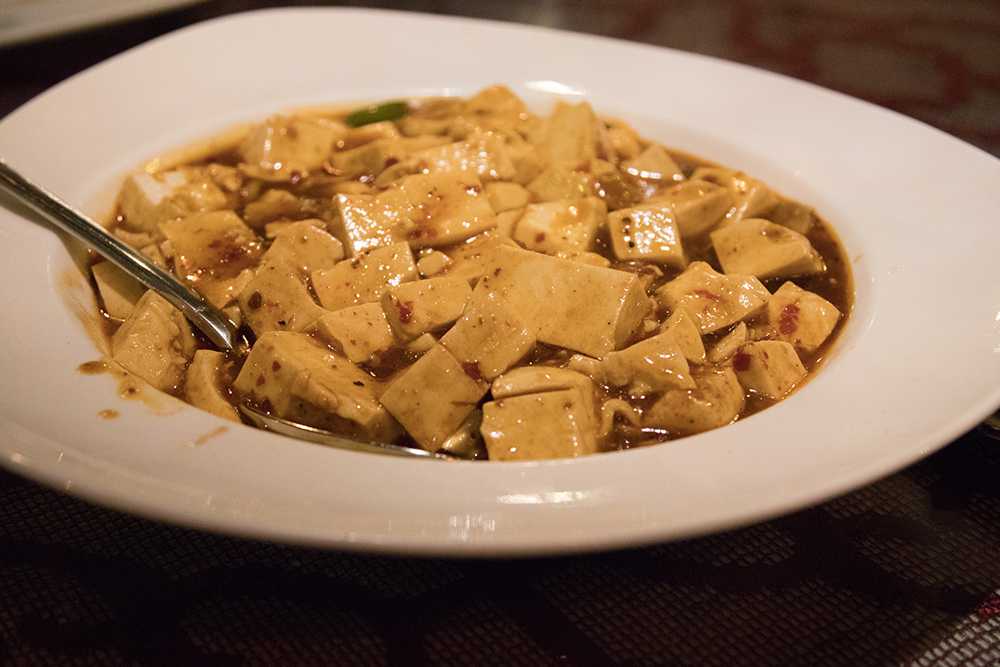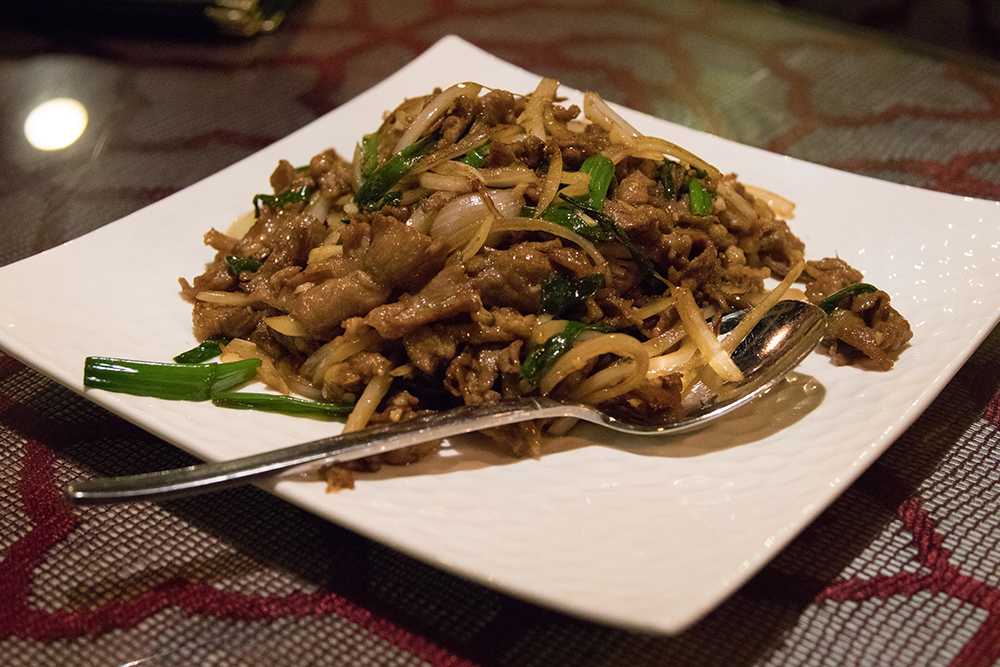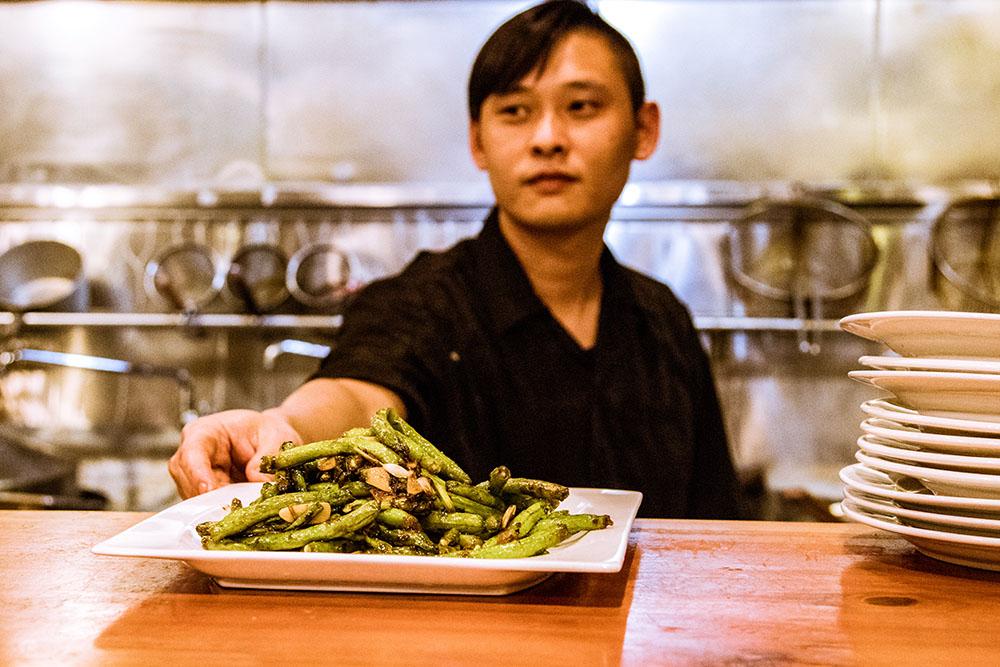Until December, only one of the dozens of restaurants on University Ave served Chinese cuisine. Taste, a brand new Sichuan restaurant, opened its doors at 423 University Ave. Sichuan, a southwest province in China, is well known for its use of spicy peppers and the resulting spicy food. In particular, Sichuan cuisine features a remarkable spice, sourced form Sichuan peppercorns, that numbs the mouth. Verde paid a visit to the new restaurant to see for ourselves how just how tasty Taste really is. Decorated with mini Chinese lanterns and modern pop music and staffed by a fully Chinese staff, the restaurant felt authentic.
We decided to review some dishes that vary in price and spice.
Chong Qing Numbing Spicy Noodles – $15
 At first glance, the Chong Qing Numbing Spicy Noodles might look like a large bowl of spicy oil, but the dish is much less intimidating than its fiery red coloring suggests. Instead, the oily soup made the chewy noodles more numbing than spicy. Underneath a half a centimeter of warm oil and a layer of bright soup lies a bed of chewy white noodles. Verde discovered that the best way to eat them was to pick them out of the soup and onto a bowl or plate to let most of the sauces drip off, and then slowly lift the noodles up, thereby reducing their intense taste. The numbing effect lasts for a while, so we recommend eating this last.
At first glance, the Chong Qing Numbing Spicy Noodles might look like a large bowl of spicy oil, but the dish is much less intimidating than its fiery red coloring suggests. Instead, the oily soup made the chewy noodles more numbing than spicy. Underneath a half a centimeter of warm oil and a layer of bright soup lies a bed of chewy white noodles. Verde discovered that the best way to eat them was to pick them out of the soup and onto a bowl or plate to let most of the sauces drip off, and then slowly lift the noodles up, thereby reducing their intense taste. The numbing effect lasts for a while, so we recommend eating this last.
Mapo Tofu – $13

One of the most well-known Sichuan dishes, Mapo Tofu, is served in a big, family-style bowl, and has a very distinctive taste. Consisting of soft, slippery tofu in a thick red sauce, this spicy mix of ginger, garlic and sichuan pepper is forgivingly mild, yet still somewhat spicy. Although it is quite oily, the spiciness of the dish left a slight buzzing sensation on the lips and tongue, a valued characteristic in Sichuan cuisine.
Beijing Onion Burst Lamb – $16

As the name of the dish implies, the Beijing Onion Burst Lamb packs overwhelming flavor in every bite. Scattered among the colorful variety of sauteed onions are thin, curled slices of lamb. The pieces of lamb are conveniently bite-sized and allows diners to experience their tenderness and immensely rich flavor. With quiet hints of onion, the lamb slices pair perfectly with white rice. Food for thought: why is a Sichuan restaurant serving Beijing dishes?
Beef Ramen Noodles – $15
 Served in a generous bowl, the beef ramen has all the right aspects of a classic Chinese noodle dish. Drenched in herb-infused brothy soup, ramen noodles of a perfect, soft consistency lie steaming. For those accustomed to salty dishes, this noodle soup may be a bit bland. However, the unconventional quality of the taste compensates for the soup’s lack of powerful flavor. With thin slices of white radish and tender beef as toppings, we were left feeling refreshed and wanting more.
Served in a generous bowl, the beef ramen has all the right aspects of a classic Chinese noodle dish. Drenched in herb-infused brothy soup, ramen noodles of a perfect, soft consistency lie steaming. For those accustomed to salty dishes, this noodle soup may be a bit bland. However, the unconventional quality of the taste compensates for the soup’s lack of powerful flavor. With thin slices of white radish and tender beef as toppings, we were left feeling refreshed and wanting more.




